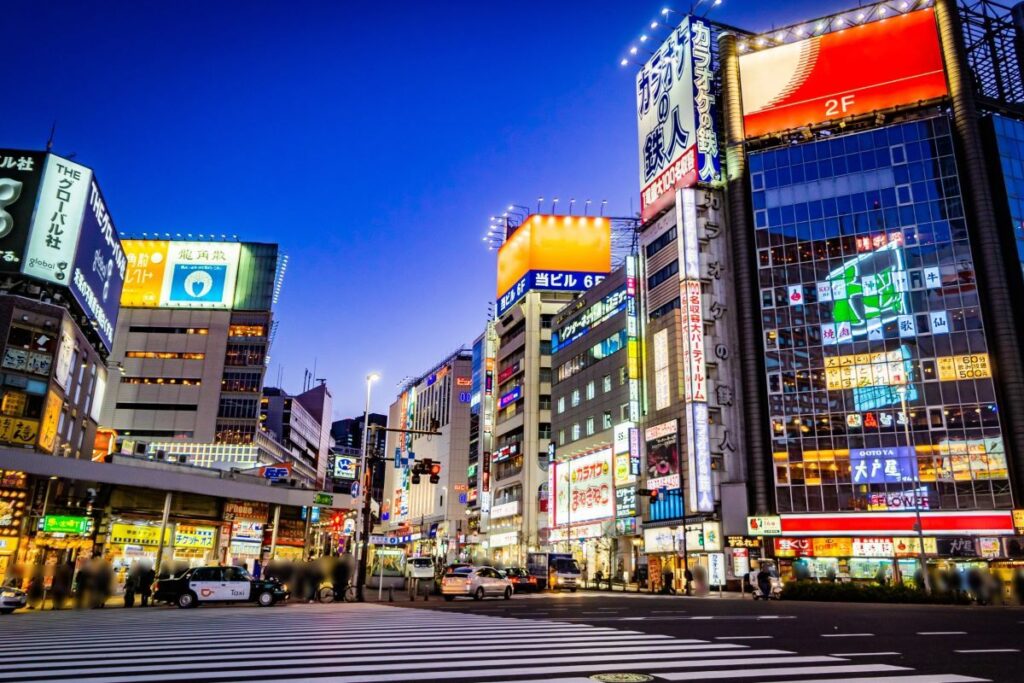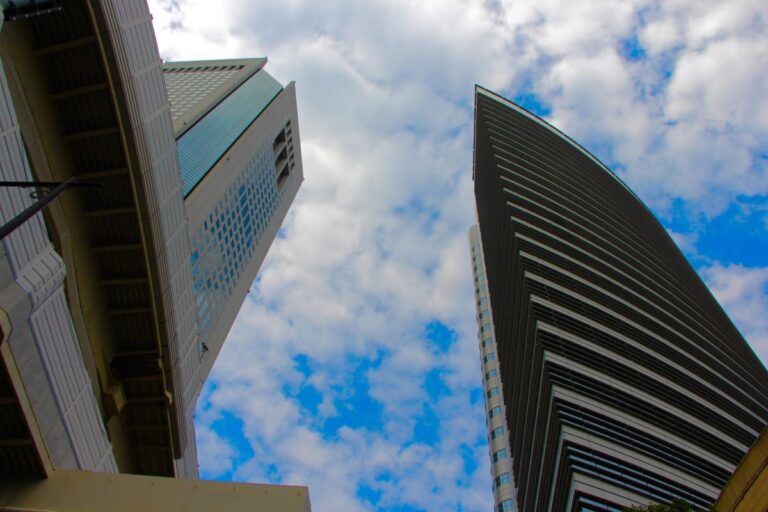Shinjuku Station is one of the busiest and most complex transportation hubs in Tokyo, Japan.
It serves as a gateway to various parts of the city, including the popular Shinjuku district. With over 3.5 million passengers passing through the station every day, it can be a challenge to find your way around.

Our Shinjuku Station guide will cover its layout, transportation options, and useful tips for navigating the station.
We will also cover the different train lines and subway stations that operate within the premises, as well as the station’s exits and landmarks located in and around the station.
History of Shinjuku Station

Shinjuku Station is one of the busiest railway stations in the world, handling millions of passengers every day. The station’s history reflects the history of Japan itself – a stunning transformation from a late-medieval society into a global economic powerhouse.
The station was first opened in 1885 as an undistinguished stop on Japan’s fledgling rail network. At the time, Shinjuku was a quiet residential area with few amenities. However, the station’s location at the intersection of several major railway lines soon made it a crucial transportation hub for the growing city of Tokyo.
Over the years, the station has undergone numerous renovations and expansions to keep pace with Tokyo’s rapid development. Today, it boasts an impressive array of amenities, including multiple shopping centers, restaurants, and even a hotel.
Despite its modern facilities, Shinjuku Station remains deeply rooted in Japanese history and culture. For example, the station’s famous “Ekiben” (station bento) – a type of boxed lunch sold at railway stations throughout Japan – reflects the country’s love of food and convenience.
Overall, Shinjuku Station is a fascinating blend of old and new, reflecting the complex history and culture of Japan itself.
The layout of Shinjuku Station

Shinjuku Station serves as a major transportation hub for Tokyo and connects various train lines, including JR lines, private railway lines, and subway lines. The station is divided into three main areas: the East Exit, the West Exit, and the South Exit. Each area has its own distinct features and serves different purposes.
The East Exit is the main entrance and exit of Shinjuku Station. It is connected to the JR Yamanote Line, the Chuo Line, and the Sobu Line. The East Exit is also home to the Odakyu Department Store and other commercial facilities.
The West Exit, on the other hand, is the gateway to the skyscraper district of Nishi-Shinjuku. It is connected to the Keio Line and the Toei Subway Oedo Line. The West Exit is also home to the Tokyo Metropolitan Government Building and other government offices.
The South Exit is the newest and smallest of the three exits. It is connected to the JR Saikyo Line and the Seibu Shinjuku Line. The South Exit is also the closest exit to the Shinjuku Southern Terrace, a popular shopping and dining complex.
Shinjuku Station has a complex layout with multiple levels and platforms. The station has more than 200 exits and entrances, making it easy to get lost. To navigate the station, it is important to understand the layout and the different train lines that run through it.
Here is a table that lists the different train lines that run through Shinjuku Station:
| Train Line | Direction |
|---|---|
| JR Yamanote Line | Circular route |
| JR Chuo Line | Westward to Hachioji, Eastward to Tokyo Station |
| JR Sobu Line | Westward to Mitaka, Eastward to Chiba |
| Keio Line | Westward to Hashimoto, Eastward to Shinjuku |
| Toei Subway Oedo Line | Circular route |
| Tokyo Metro Marunouchi Line | Westward to Ogikubo, Eastward to Ikebukuro |
| Tokyo Metro Fukutoshin Line | Northward to Shibuya, Southward to Yokohama |
| Odakyu Line | Westward to Odawara, Eastward to Shinjuku |
With so many train lines and exits, it can be overwhelming to navigate Shinjuku Station. However, by understanding the layout and the different train lines, visitors can easily get around and explore the surrounding areas.
Shinjuku Station is one of the busiest transportation hubs in Tokyo, with a variety of transportation options available to travelers. Here are some of the most popular:
Train Lines
There are train lines, including the JR Yamanote Line, the Keio Line, the Odakyu Line, and the Tokyo Metro Marunouchi Line. Each line has its own ticket gates and platforms, so be sure to check which line you need to take before entering the station.
Bus Stops
Shinjuku Station is also a major bus hub, with several bus stops located around the station. The Shinjuku Expressway Bus Terminal (Busta Shinjuku) is located at the south exit of the station and offers long-distance bus services to destinations throughout Japan.
Taxis
Taxis are also available at Shinjuku Station, with taxi stands located near the east, west, and south exits of the station. Taxis can be a convenient option for travelers with heavy luggage or those traveling to destinations not easily accessible by train or bus.
Bicycle Rentals
For travelers looking to explore the area around Shinjuku Station on two wheels, bicycle rentals are available at several locations around the station. These rentals can be a fun and eco-friendly way to explore the city.
Shopping and Dining at Shinjuku Station

The Station is not only a transportation hub but also a shopping and dining destination. It has several shopping areas, including the NEWoMan shopping mall, Lumine EST, and Lumine 1 and 2. These shopping areas offer a variety of fashion boutiques, food shops, cafes, bakeries, and restaurants.
NEWoMan is the newest shopping mall at Shinjuku Station. It has a modern design and is home to many trendy fashion boutiques, including H&M, Zara, and Uniqlo. NEWoMan also has a variety of food options, including Japanese cuisine, pizza, and burgers. Visitors can also enjoy a cup of coffee or tea at one of the many cafes in the mall.
Lumine EST is another popular shopping area in Shinjuku Station. It is located on the east side of the station and has over 200 shops, including fashion boutiques, cosmetics stores, and souvenir shops. Lumine EST also has a food court on its top floor, where visitors can enjoy a variety of Japanese and international dishes.
Lumine 1 and 2 are located on the west side of Shinjuku Station. These shopping areas have a variety of stores, including fashion boutiques, bookstores, and electronics shops. Lumine 1 and 2 also have a food court on their top floors, where visitors can enjoy a variety of Japanese and international dishes.
In addition to these shopping areas, Shinjuku Station has several dining options. The station has a variety of restaurants, cafes, and fast-food chains, including McDonald’s, KFC, and Starbucks. Visitors can also enjoy traditional Japanese cuisine at one of the many restaurants in the station.

Everyone has their own story of getting lost in Shinjuku and with over 200 exits and 36 platforms, it can be tough finding your way around. Here are some tips to help you navigate the station:
- Download a map of the station beforehand: It’s a good idea to familiarize yourself with the station layout before you arrive. You can find a map of the station on the official JR East website or download a map app like Navitime or Jorudan.
- Follow the signs: Shinjuku Station has clear signs in English and Japanese that will guide you to your destination. Follow the signs for your train line, platform, or exit.
- Use the correct exit: Shinjuku Station has many exits, and each one leads to a different part of the city. Make sure you know which exit you need to take to reach your destination.
- Ask for help: Don’t be afraid to ask station staff or fellow passengers for help if you’re lost or confused. Most people in Japan are friendly and willing to assist you.
Here are some additional tips to help you navigate Shinjuku Station:
| Ticket gates | Train lines | Exits |
|---|---|---|
| Shinjuku Expressway Bus Terminal | Chuo Line | East Exit |
| South Exit | Yamanote Line | South Exit |
| West Exit | Saikyo Line | West Exit |
Remember to give yourself plenty of time to navigate the station, especially during rush hour. With these tips, you’ll be able to navigate Shinjuku Station with ease.
The Sum Up
One of the most important things to keep in mind when visiting Shinjuku Station is to know which exit to take. As mentioned earlier, there are over 200 exits, and taking the wrong one can lead to confusion and wasted time. Refer to the JR Shinjuku Station map or use a navigation app to ensure you take the correct exit for your destination.
Another important tip is to be aware of the station’s layout. The station is divided into several sections, and it’s essential to know which section your train is departing from. Use the station’s signage or consult with station staff if you’re unsure.
If you have some time to spare, consider exploring the area around Shinjuku Station. There are many attractions, including the Tokyo Metropolitan Government Building, which offers stunning views of the city, and the Kabukicho district, known for its lively nightlife. Refer to the provided search results for more information on the area.
With its convenient location and extensive transportation options, it’s an excellent starting point for exploring the city. Just be sure to plan ahead and stay aware of your surroundings, and you’ll have a great time in one of Tokyo’s most exciting districts.






